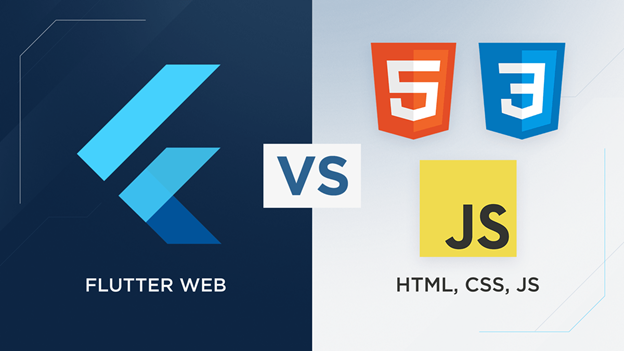
Flutterap blog
see posts about our believes
Does flutter use javascript?

Does flutter use javascript?
Flutter is an open-source UI software development toolkit created by Google for building natively compiled applications for mobile, web, and desktop from a single codebase. Flutter uses the Dart programming language, which is a statically typed language developed by Google, as its primary programming language.
Flutter can generate JavaScript code from Dart for web applications using a process known as "Ahead-of-Time" (AOT) compilation to JavaScript. Here's a high-level overview of how this process works:
Dart Code: You write your Flutter web application using Dart, the programming language that Flutter is primarily built with. Dart is a language developed by Google, which can be used both for client-side (web) and server-side (back-end) development.
Dart to JavaScript Compilation: When you are ready to deploy your Flutter web application, you use the Dart SDK's web compilation tools. The primary tool for this purpose is called `dart2js`. This tool takes your Dart code and compiles it into JavaScript code. The output JavaScript is optimized and minified to reduce its size and improve performance.
JavaScript Output: The result of the compilation is a set of JavaScript files that can be executed by web browsers. These files contain the logic and functionality of your Flutter web application in a form that is compatible with web browsers.
HTML Integration: You typically include the generated JavaScript files in an HTML file, which also includes the necessary HTML structure and CSS styles. This HTML file serves as the entry point for your Flutter web application when it's loaded in a web browser.
Web Browser Execution: When a user accesses your Flutter web application in a web browser, the browser loads the HTML file and executes the included JavaScript code. This code initializes your Flutter app, renders the user interface, and handles user interactions.
Runtime Environment: The Flutter framework provides a runtime environment within the web browser. This runtime includes a rendering engine that can create a native-like user interface in the browser, similar to how Flutter works on native platforms.
Web-Specific Components: Flutter for the web also includes web-specific implementations of certain components and widgets to ensure that your app looks and behaves appropriately in a web browser.
In summary, Flutter for the web uses the Dart programming language, which is compiled to JavaScript using tools like `dart2js`. The generated JavaScript code, along with HTML and CSS, allows you to build and run Flutter web applications in web browsers, while still benefiting from Flutter's high-quality user interface and cross-platform development capabilities.
When you develop applications with Flutter, you write your code in Dart, and Flutter's framework compiles it to native machine code for the target platform. This approach allows Flutter apps to have high performance and a native look and feel on each platform it supports, whether it's Android, iOS, the web, or desktop operating systems.
Comparison of JavaScript and Dart as programming languages:
JavaScript is a different programming language primarily used for web development, and it's commonly associated with web browsers. While you can use Flutter to create web applications (Flutter for Web), it does not use JavaScript for its core logic. Instead, it uses Dart to generate JavaScript code that can be executed in web browsers, allowing you to build web applications with Flutter's framework while still primarily working with Dart.
JavaScript and Dart are both programming languages, but they have distinct characteristics, use cases, and design philosophies. Here's a comparison of the two languages:
1. Purpose and Origins:
- JavaScript: JavaScript was initially created as a scripting language for web browsers to make web pages interactive. It has since evolved into a versatile, multipurpose language used for both front-end and back-end development.
- Dart: Dart was developed by Google and introduced as a language for building web applications. It was created with the goal of improving on JavaScript's shortcomings for large-scale web app development.
2. Type System:
- JavaScript: JavaScript is dynamically typed, which means that variable types are determined at runtime. This flexibility can lead to runtime errors and makes it more challenging to catch certain types of bugs during development.
- Dart: Dart is statically typed, allowing developers to specify the types of variables at compile-time. This can catch many errors before runtime and lead to more maintainable code.
3. Language Features:
- JavaScript: JavaScript has a prototypal inheritance model, which can be both powerful and confusing for developers. It supports functional programming paradigms but also allows for object-oriented programming.
- Dart: Dart uses a class-based inheritance model, which is more familiar to developers coming from languages like Java or C#. It offers strong support for both object-oriented and functional programming.
4. Concurrency and Asynchrony:
- JavaScript: JavaScript relies heavily on callbacks and promises for handling asynchronous operations. While modern JavaScript also supports async/await, dealing with callbacks can lead to callback hell.
- Dart: Dart has built-in support for asynchronous programming using `async` and `await`, making it easier to manage asynchronous code. It offers more elegant solutions for handling concurrency.
5. Tooling and Ecosystem:
- JavaScript: JavaScript has a vast and mature ecosystem with numerous libraries and frameworks, such as React, Angular, and Node.js, for both front-end and back-end development. It has excellent developer tools, including debuggers and profilers.
- Dart: Dart has a smaller ecosystem compared to JavaScript, but it has been steadily growing. Flutter, a popular UI framework, is built with Dart and has gained significant traction for mobile and web app development. Dart also has a growing set of libraries and tools.
6. Performance:
- JavaScript: JavaScript engines have made significant performance improvements over the years. It's a highly optimized language for web browsers.
- Dart: Dart can be compiled to native machine code, which can result in excellent performance for certain use cases. In web development, its performance depends on the efficiency of the JavaScript code generated by the Dart compiler.
7. Community and Adoption:
- JavaScript: JavaScript has a massive and diverse developer community, making it one of the most widely used programming languages globally.
- Dart: Dart has a smaller community compared to JavaScript, but it has gained popularity, especially within the Flutter development community.
Ultimately, the choice between JavaScript and Dart depends on your specific project requirements, familiarity with the language, and the ecosystem you intend to work in. JavaScript remains a dominant language for web development, while Dart is a compelling choice, particularly when building web applications with Flutter or for scenarios where strong typing and asynchronous programming are crucial.





